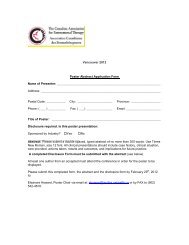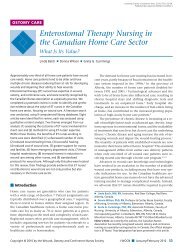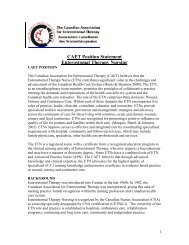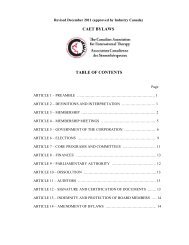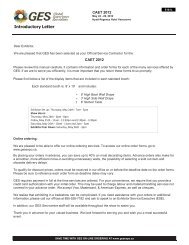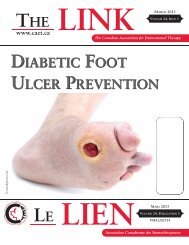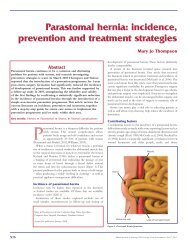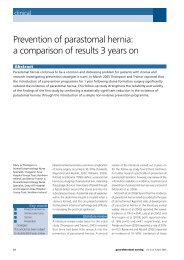Incidence of parastomal hernia before and after a prevention ...
Incidence of parastomal hernia before and after a prevention ...
Incidence of parastomal hernia before and after a prevention ...
Create successful ePaper yourself
Turn your PDF publications into a flip-book with our unique Google optimized e-Paper software.
clinical<br />
Figure 1<br />
Abdominal exercises following stoma forming surgery<br />
Pelvic tilting<br />
1. Lie on your back on a firm surface<br />
with knees bent <strong>and</strong> feet flat on the<br />
bed.<br />
2. Pull your tummy in, tilt your<br />
bottom upwards slightly while<br />
pressing the middle <strong>of</strong> your back<br />
into the bed <strong>and</strong> hold for two<br />
seconds<br />
3. Let go slowly<br />
4. Repeat ten times daily.<br />
Knee rolling<br />
1. Lie on your back on a firm surface with<br />
knees bend <strong>and</strong> feet flat on the bed<br />
2. Pull your tummy in <strong>and</strong> keeping<br />
your knees together, slowly roll them<br />
from side to side<br />
3. Repeat ten times.<br />
Abdominal sit ups<br />
1. Lie on your back on a firm surface<br />
with knees bent <strong>and</strong> feet flat on the bed<br />
2. Place your h<strong>and</strong>s on the front <strong>of</strong><br />
your thighs <strong>and</strong> pull your tummy in<br />
3. Lift your head <strong>of</strong>f the pillow<br />
4. Hold for three seconds, then slowly<br />
return to starting position<br />
5. Repeat ten times daily.<br />
Reprinted with kind permission from Respond Plus<br />
ies on the timing <strong>of</strong> development <strong>of</strong> incisional<br />
<strong>hernia</strong>s are available; therefore, as a <strong>parastomal</strong><br />
<strong>hernia</strong> can be equated with an incisional <strong>hernia</strong><br />
(Pearl 1989), these studies were explored to<br />
ascertain the timing <strong>of</strong> <strong>hernia</strong> development.<br />
A seminal study <strong>of</strong> 500 patients with incisional<br />
<strong>hernia</strong>s showed that 67.8 per cent had<br />
developed by one year post surgery (Akman<br />
1962). This finding has implications for the<br />
follow-up <strong>of</strong> stoma patients in the <strong>prevention</strong><br />
<strong>of</strong> <strong>parastomal</strong> <strong>hernia</strong>, suggesting that patients<br />
should be followed for at least one year. In a<br />
separate study, abdominal incisional <strong>hernia</strong>s<br />
developed <strong>before</strong> three months in 57 per cent<br />
<strong>of</strong> patients (Bucknall et al 1982).<br />
Contributing factors<br />
Contributing factors in the incidence <strong>of</strong> a<br />
<strong>parastomal</strong> <strong>hernia</strong> are reported as obesity,<br />
malnutrition, post-operative sepsis, abdominal<br />
distension <strong>and</strong> chronic cough (Pearl 1989).<br />
Other reviews suggest that chest infection,<br />
wound sepsis <strong>and</strong> the ageing process are also<br />
contributing factors (Bucknall <strong>and</strong> Ellis 1984).<br />
A significant correlation exists between wound<br />
<strong>hernia</strong>tion <strong>and</strong> elderly, obese males undergoing<br />
bowel surgery (Bucknall et al 1982).<br />
The association with age may be explained<br />
by the fact that, with increasing age, the rectus<br />
abdominus muscle becomes thinner <strong>and</strong> weaker<br />
<strong>and</strong> is unable to provide adequate support for a<br />
stoma (Williams 2003). However, Williams also<br />
reports that females are more prone to weak<br />
rectus abdominus muscles implying a higher<br />
incidence <strong>of</strong> <strong>parastomal</strong> <strong>hernia</strong>s in this group<br />
which contradicts the findings <strong>of</strong> Bucknall <strong>and</strong><br />
Ellis (1984).<br />
There appears to be no link between technical<br />
factors associated with the construction <strong>of</strong><br />
a stoma such as siting, trephine size, fascial<br />
fixation <strong>and</strong> closure <strong>of</strong> lateral space, <strong>and</strong><br />
stoma <strong>hernia</strong>tion (Carne et al 2003). Yet this<br />
contradicts an earlier study by Sjodahl et al<br />
(1988) which found that stomas constructed<br />
through the rectus abdominus muscle had<br />
a statistically significantly lower incidence <strong>of</strong><br />
<strong>hernia</strong>tion than those constructed lateral to<br />
the rectus abdominus muscle with incidences<br />
<strong>of</strong> 2.9 <strong>and</strong> 21.6 per cent respectively. Other<br />
studies support this observation (Martin <strong>and</strong><br />
Foster 1996).<br />
aim <strong>of</strong> the study<br />
The aim <strong>of</strong> this study was to ascertain if an<br />
increased awareness <strong>of</strong> the potential for <strong>parastomal</strong><br />
<strong>hernia</strong> development, the introduction<br />
<strong>of</strong> abdominal exercises <strong>and</strong> the use <strong>of</strong> support<br />
belts from three months until one year post<br />
surgery minimised the development <strong>of</strong> a <strong>parastomal</strong><br />
<strong>hernia</strong>.<br />
method<br />
The study was divided into two aims:<br />
1. Year 1 A retrospective study <strong>of</strong> patients<br />
who had a new stoma formed from August<br />
2001 – July 2002 to examine for incidence<br />
<strong>of</strong> <strong>parastomal</strong> <strong>hernia</strong> development.<br />
2. Year 2 A prospective study <strong>of</strong> patients who<br />
had a new stoma formed from August 2002<br />
– July 2003 for incidence <strong>of</strong> <strong>parastomal</strong> <strong>hernia</strong><br />
24 gastrointestinal nursing Vol 3 No 2 March 2005





